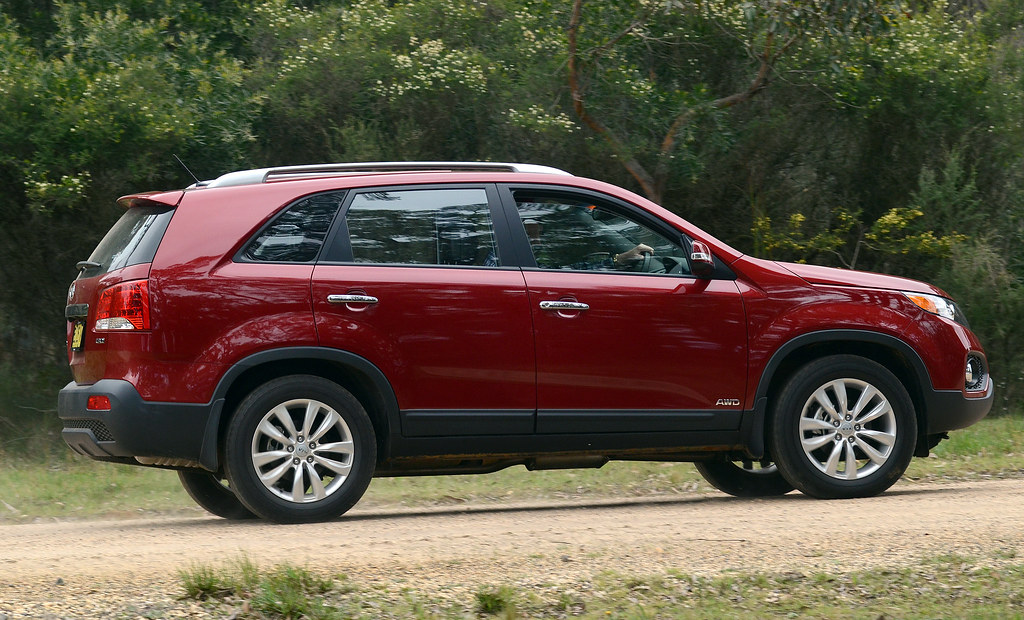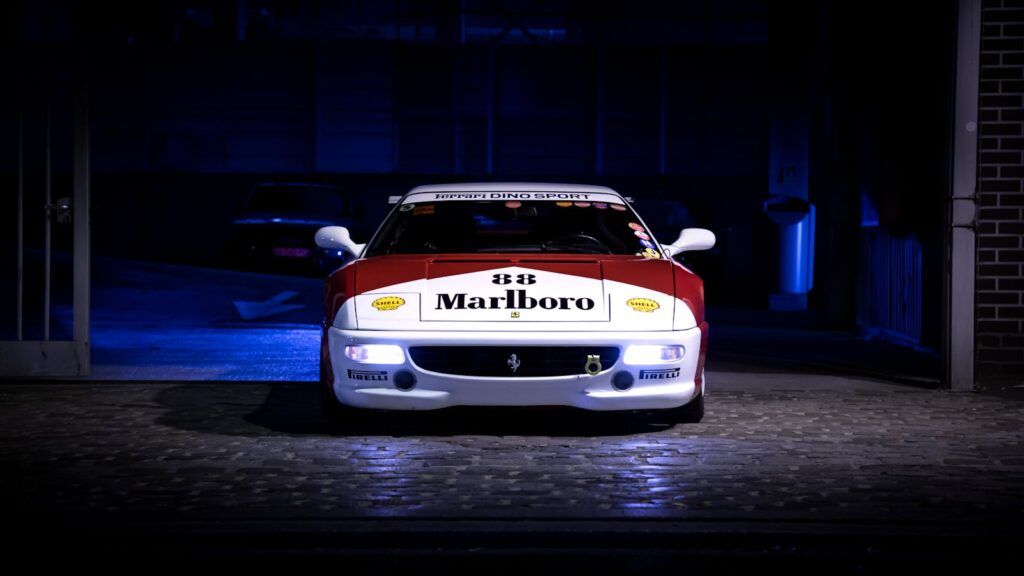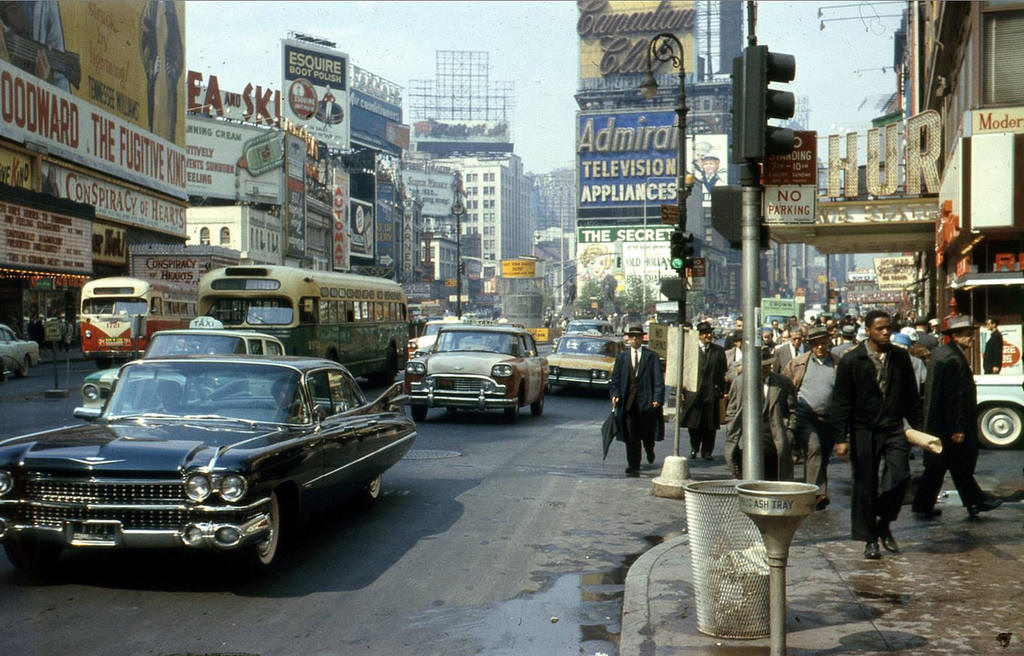
The 1960s were an era of unparalleled optimism and groundbreaking innovation, especially in the automotive world. It was a time when designers and engineers, fueled by the space race and a burgeoning counter-culture, were given free rein to imagine the future on four wheels. Concept cars from this decade weren’t just styling exercises; they were bold declarations of intent, daring experiments in aerodynamics, propulsion, and passenger experience that often pushed the boundaries of what was technically possible or commercially viable.
These machines, frequently unveiled at grand auto shows, promised everything from nuclear power to gyroscopic balance, from interchangeable power units to cockpits straight out of science fiction. While many of these fantastical visions never made it past the prototype stage, remaining mere whispers of what might have been, their influence reverberated through the industry for decades. They captivated the public, inspired future designs, and demonstrated the sheer passion and ingenuity bubbling within the automotive culture of the time.
Join us as we take a deep dive into the archives to unearth some of the most intriguing and often overlooked ’60s prototypes that, for one reason or another, vanished from the prospect of mass production. These are the unsung heroes of automotive design, the secrets of an era defined by daring imagination, and each one tells a fascinating story of ambition, challenge, and the eternal allure of the open road – or at least, the open drawing board.

1. **Plymouth XNR Concept (1960)**The year 1960 saw Chrysler design chief Virgil Exner at the peak of his enthusiasm, transforming the humble Plymouth Valiant into something utterly radical: the Plymouth XNR concept car. Say those initials quickly, and you get a sense of its singular identity. This was Exner’s imaginative “Asymmetrical Styling” brought to life, a bold statement especially coming from a brand typically associated with more conventional offerings. It was undeniably a head-turner, designed with a distinct purpose in mind.
The XNR was conceived as Plymouth’s first full-blown sports car, an audacious attempt to challenge established rivals like the Chevrolet Corvette and even the burgeoning Ford Falcon in the compact sports car market. While it could theoretically seat two, its design was truly optimized for a single occupant – the driver – emphasizing its raw, performance-oriented nature. The asymmetrical bodywork, with its distinctive fin, wasn’t just for show; it embodied a future vision that was both artistic and aggressive.
What truly set the XNR apart, and fueled rampant speculation among sports-car enthusiasts about its imminent sale, was its heart: an engine that meant serious business. Powering this futuristic machine was the hairiest version ever developed of Valiant’s 225 Slant Six. This powerplant was tuned to pump out an impressive 250 horsepower, a remarkable output of 1.11 horses per cubic inch, making it a true performance marvel for its time and hinting at a potential production rival that never materialized.
Unlike the fate of many concept cars, which often ended up in the automaker’s private collection, the XNR took a far more adventurous path. After its initial showcase, it was returned to its Italian builder, Ghia, and subsequently sold to a privateer. This marked the beginning of a truly globetrotting journey for the concept. The XNR changed hands multiple times before making its way to Lebanon in the 1970s, where it was discovered and hidden away during the country’s brutal civil war, an almost unbelievable twist for an automotive artifact.
Its story didn’t end there, though. The concept car resurfaced and was sent to Canada in 2008 for a meticulous restoration that lasted until 2011. Its incredible journey culminated in 2012 when it was auctioned for nearly $1 million, a testament to its enduring allure and historical significance. Today, years after the Plymouth brand itself was discontinued, the XNR remains a fascinating, underrated piece of automotive history, a testament to bold design that deserved far more attention than it initially received.
Car Model Information: 2022 Lincoln Aviator Reserve AWD
Name: Plymouth XNR
Caption: The 1960 Plymouth XNR concept car at the 2014 Lime Rock Concours d’Élégance.
Manufacturer: Carrozzeria Ghia
Aka: XNR 500
ModelYears: 1960
Designer: Virgil Exner
Class: Concept car
BodyStyle: Roadster (automobile)
Layout: Front-engine, Rear-wheel-drive layout
Platform: Plymouth Valiant#First generation (1960–1962)
Related: Asimmetrica by Ghia
Engine: cvt,Chrysler Slant-6 engine
Transmission: Manual transmission
Wheelbase: cvt
Length: cvt
Width: cvt
Height: cvt
Doors: 2
Weight: cvt
Sp: us
Categories: Articles with short description, CS1 German-language sources (de), Cars introduced in 1960, Commons category link from Wikidata, Plymouth concept vehicles
Summary: The Plymouth XNR is a concept car developed by Chrysler. It was designed by Virgil Exner, and first shown in 1960. Also called the XNR 500, the car is an open roadster with some asymmetric features, and was proposed as a sporty addition to the Plymouth model lineup, and as competition for the Chevrolet Corvette.
Get more information about: Plymouth XNR
Buying a high-performing used car >>>
Brand: Plymouth Model: XNR Concept
Price: $39,000 Mileage: 66,933 mi.
Read more about: 16 Wild Concept Cars You’ll Never Get To Drive
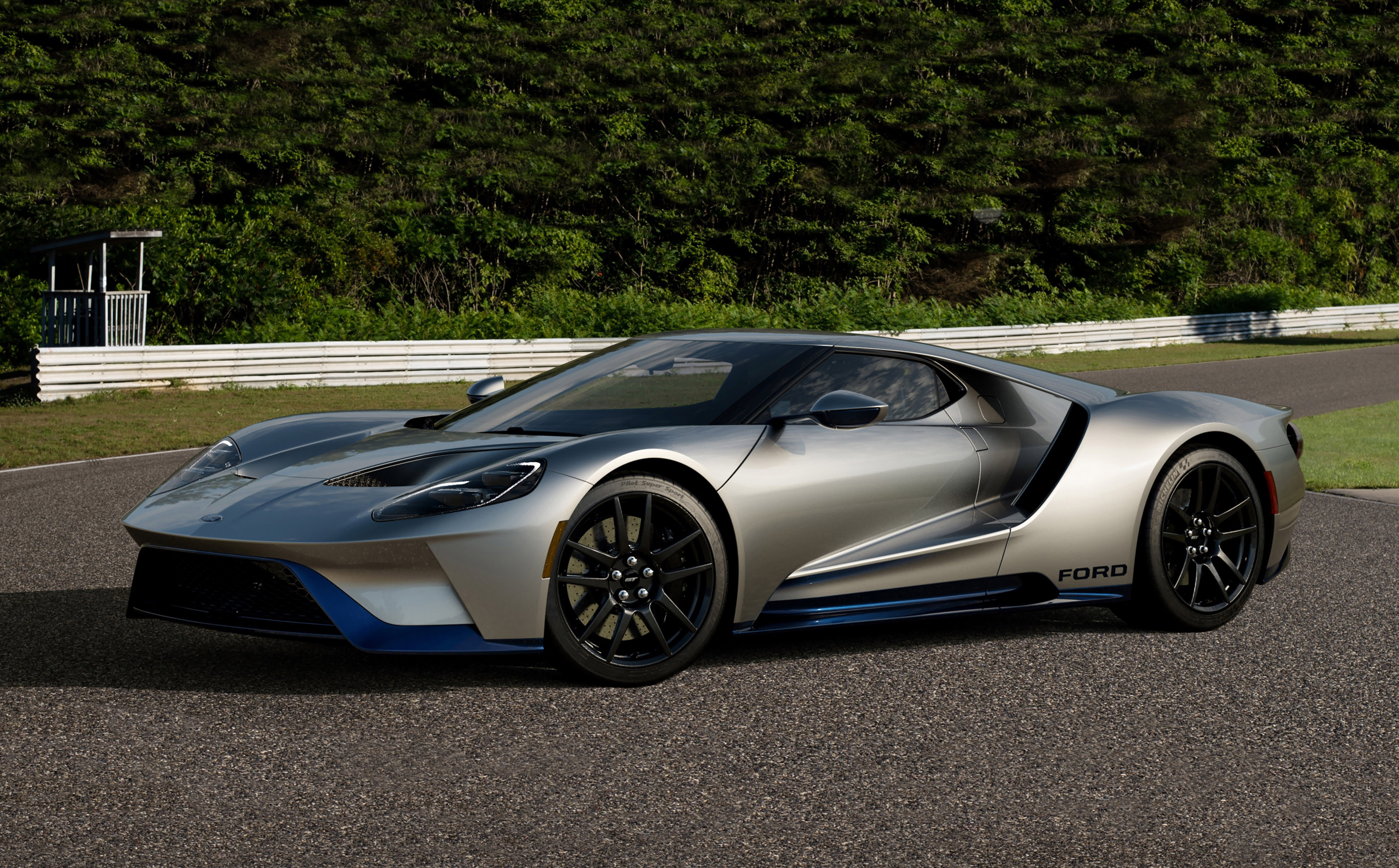
2. **Ford Gyron Concept Car (1961)**The 1961 Ford Gyron Concept Car emerged from the fertile imagination of Alex Tremulis, a designer whose chief and overwhelming concern was aerodynamics. Tremulis had been sketching ideas for a gyroscopically controlled two-wheeled car as early as 1956, but his interest was rekindled after witnessing GM’s sensational 1959 Firebird III concept. Hailed as the world’s most advanced and exotic car, the Firebird III spurred Tremulis to believe he could, indeed, do better with his own vision of future mobility.
Tremulis, alongside new hire Syd Mead, convinced Ford executives to greenlight a full-scale version of the Gyron. Their vision was radical: a two-wheeled vehicle that would represent the ultimate in automotive aerodynamics, kept upright by an internal gyroscope. As automotive historians the Farrells eloquently described, Tremulis “expected the Gyron to be a genuine breakthrough that would influence all future car design.” It was a concept born from an unwavering belief in a fundamentally different approach to personal transportation.
However, the ambition of the Gyron met a practical roadblock in its execution. Building a gyroscope of sufficient size and power to reliably keep a full-scale car upright proved to be prohibitively expensive for a mere show car. Ever resourceful, the design team adapted, adding a pair of outrigger wheels to keep the Gyron stable and upright while it was on display at car shows. This practical concession, however, didn’t diminish the car’s futuristic appeal or its core innovative spirit.
Despite the stability compromise, the Gyron was more than just a static display. Its front wheel could be steered via a console-mounted dial, offering a glimpse into an alternative control interface that predated many modern drive-by-wire systems. An electric motor propelled the fiberglass-bodied show car, allowing it to move at speeds of up to about 5 MPH. This functional capability, even at low speeds, underscored Ford’s commitment to demonstrating the theoretical viability of such a unique concept.
The Gyron, with its bold two-wheeled configuration and aerodynamic obsession, consumed a significant portion of Tremulis’s creative energy and time. It was a testament to Ford’s willingness to explore unconventional ideas during an era of booming automotive experimentation. While it never evolved beyond its show car status, the Gyron stands as a fascinating artifact of automotive futurism, a concrete expression of a designer’s belief that the automobile could, and perhaps should, evolve in dramatically different directions.

3. **Ford Seattle-Ite XXI Concept Car (1962)**Unveiled for the Seattle World’s Fair in 1962, and aptly named after its host city, the Ford Seattle-Ite XXI was a styling dream car that envisioned a future far beyond the conventional. This unique concept was a striking demonstration of Ford’s forward-thinking approach, combining daring aesthetics with genuinely revolutionary technological proposals. It was a vehicle designed to captivate and challenge perceptions of what a car could be in the coming decades.
One of the Seattle-Ite XXI’s most audacious features was its proposed four steerable front wheels, a radical departure from traditional automotive engineering that promised unprecedented maneuverability and stability. But its innovations didn’t stop there. The car also envisioned easily interchangeable power units, a modular design concept that would allow owners to swap between an economical power capsule of perhaps 60 horsepower for city driving, and a high-speed, transcontinental unit exceeding 400 horsepower for long journeys.
This modular power unit concept was intricately tied to the car’s overall design, where “the entire front of the car would ‘break away’ from the passenger compartment.” This ingenious design would not only facilitate power unit changes but also allow for “many styling treatments for the trailing vehicle that would house passengers in air-conditioned, noiseless comfort.” It was a vision of ultimate adaptability, allowing a single vehicle platform to fulfill multiple roles, a truly groundbreaking idea for its time.
Beyond its mechanical flexibility, the Seattle-Ite XXI was packed with advanced technological concepts. It was imagined with a travel programming computer, a precursor to modern navigation systems, which would display ETA, weather information, and a rolling map on a dashboard viewing screen. Other luxuries included variable density glass, jalousie windows, and fingertip steering via a console-mounted dial, eliminating the need for a traditional steering wheel. These features painted a picture of effortless, intelligent travel.
Perhaps most strikingly, the concept even made room for “compact nuclear propulsion devices” among its chargeable power pack options, a testament to the era’s optimistic (and somewhat naive) view of atomic energy’s future applications. While the nuclear propulsion never materialized, and the Seattle-Ite XXI remained a visionary concept, its blend of modularity, advanced computing, and radical design elements foreshadowed many automotive trends that would only truly begin to emerge decades later. It stands as a powerful symbol of early ’60s automotive ambition.
Car Model Information: 2022 Lincoln Aviator Reserve AWD
Categories: Articles with short description, CS1 errors: missing periodical, Century 21 Exposition, Ford concept vehicles, Nuclear propulsion
Summary: The Ford Seattle-ite XXI was a 3/8 scale concept car designed by Alex Tremulis and displayed on 20 April 1962 on the Ford stand at the Seattle World’s Fair.
Get more information about: Ford Seattle-ite XXI
Buying a high-performing used car >>>
Brand: Ford Model: Seattle-Ite XXI
Price: $39,000 Mileage: 66,933 mi.
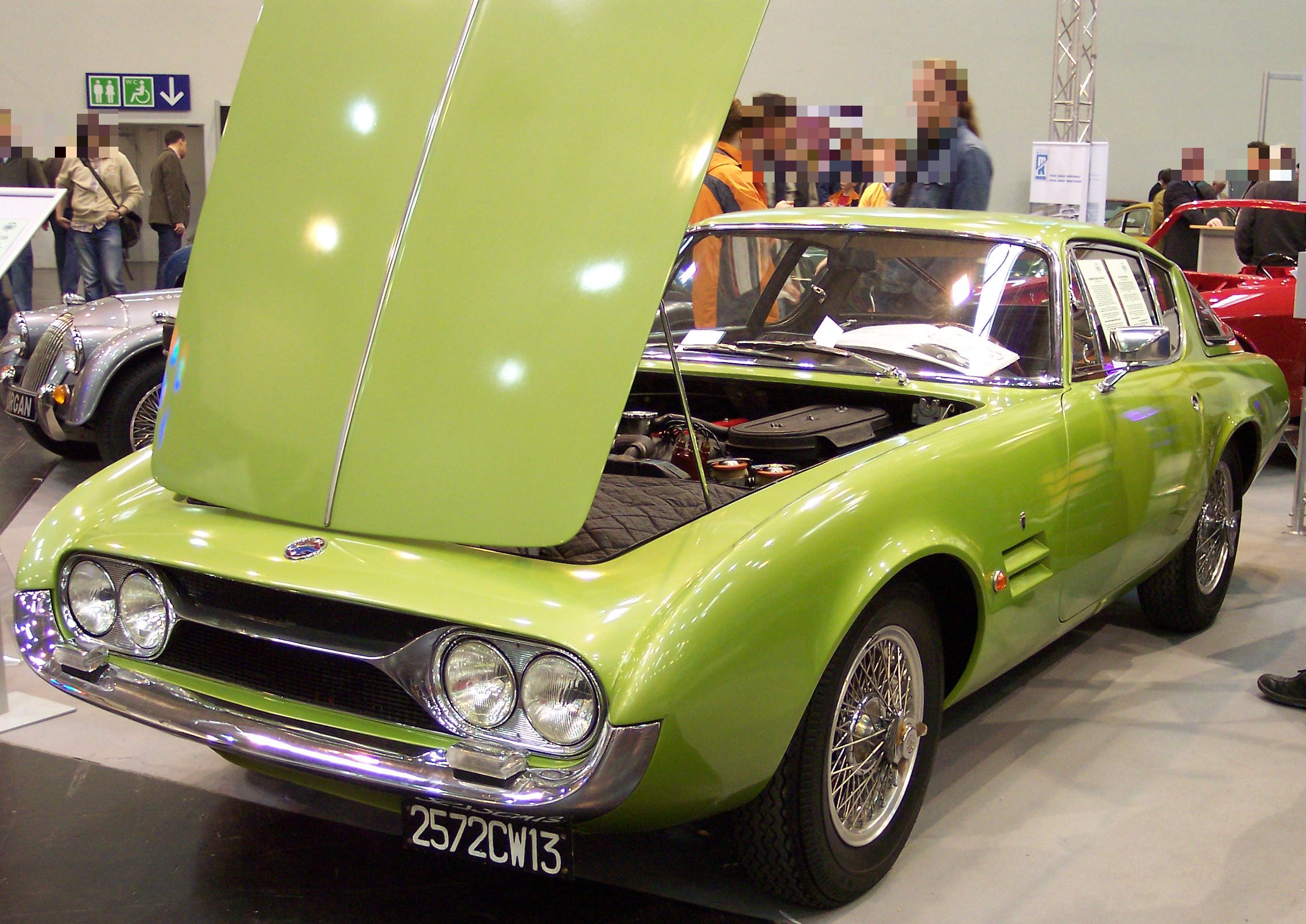
4. **Ghia G230S Prototipo (1963)**By the early 1960s, the Italian design house Ghia had established a stellar reputation for skillfully bodying both American and Italian automobiles, lending its distinctive flair to a variety of chassis. However, 1963 marked a significant turning point as Ghia embarked on a more ambitious venture: the production of its own cars, exemplified by the Ghia G230S Prototipo. This particular model stands as one of the first vehicles to be completed entirely under Ghia’s direct purview, albeit with considerable assistance from local specialized firms.
The foundation for the G230S began with a Fiat 2300 S platform, a respectable base but one that Ghia deemed too fundamental for their upscale aspirations. To elevate the Prototipo to the desired level of performance and structural integrity, Ghia turned to acclaimed specialists for upgraded components. This pursuit of excellence led them to Gilco, a company renowned for designing and building chassis for illustrious marques like Ferrari, ensuring a pedigree of engineering beneath Ghia’s bespoke coachwork.
At Gilco, the legendary engineer Gioacchino Colombo, celebrated for his masterful “Maserati Birdcage” concept, was enlisted to design a tubular space frame for the G230S. This decision was pivotal, transforming the Fiat underpinnings into a sophisticated structure capable of supporting a true performance grand tourer. Colombo’s expertise ensured that the Ghia G230S Prototipo was not merely a beautiful body, but a vehicle engineered with serious dynamic capabilities, marrying Italian artistry with advanced chassis technology.
The collaboration with Gilco and Colombo allowed Ghia to stamp its authority not just as a coachbuilder, but as a genuine automotive constructor, albeit on a limited scale. The “Prototipo” designation itself speaks to its experimental, pioneering nature, a testbed for Ghia’s ambitions to produce complete vehicles. This approach allowed them to push boundaries in terms of performance and luxury, transcending the typical role of a coachbuilder simply re-skinning an existing car.
While the Ghia G230S Prototipo never transitioned into widespread production, it remains a significant landmark in Ghia’s history. It represents a moment when the design house sought to combine its aesthetic prowess with top-tier engineering, creating a vehicle that was a holistic expression of Italian automotive excellence. It’s a testament to the collaborative spirit and specialized craftsmanship that characterized the golden age of Italian car design, demonstrating what could be achieved when visionary designers teamed up with engineering titans.
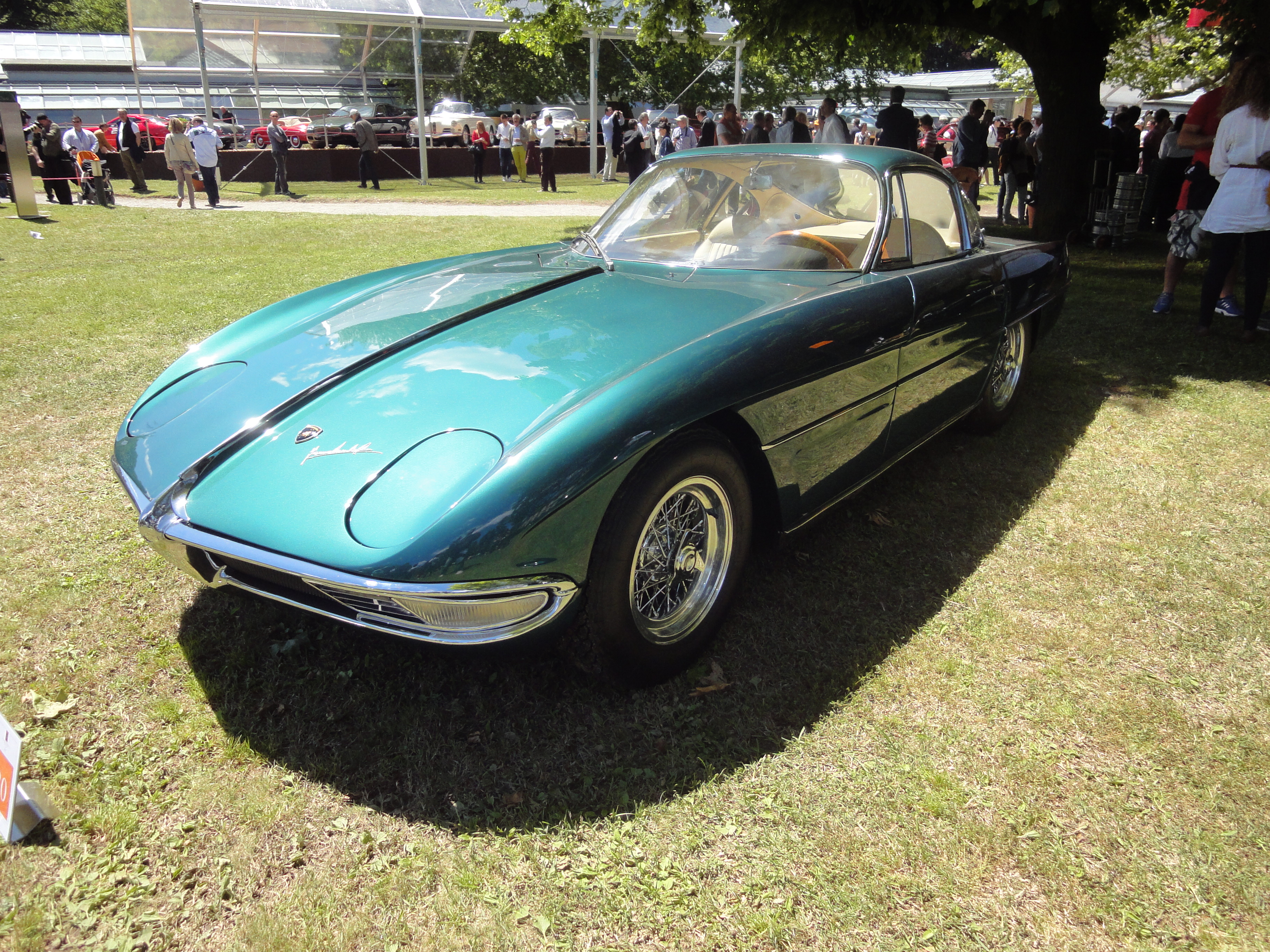
5. **Lamborghini 350 GTV (1963)**The legend of Lamborghini, a name synonymous with audacious performance and exotic design, began in 1963 with a singular statement: the 350 GTV prototype. This pivotal vehicle made its highly anticipated debut at the ’63 Turin Auto Show, instantly grabbing headlines and defining the nascent vision of Ferruccio Lamborghini. Frustrated with the perceived shortcomings of his own Ferrari, Lamborghini famously decided he could build a better car, a challenge that manifested spectacularly in the GTV.
Conceived by the visionary Franco Scaglione and meticulously built by Carrozzeria Sargiotto in Turin, the 350 GTV presented a semi-fastback body that was, to put it mildly, controversial at the time. Its lines were bold, unconventional, and immediately attracted a significant amount of attention, setting a dramatic precedent for the brand’s future design philosophy. This car wasn’t just a new entry into the sports car market; it was an emphatic declaration of a new force, ready to shake up the established order.
At the core of the 350 GTV’s revolutionary spirit was its formidable engine, a 3.5-liter dry sump racing-specific V12. This powerplant was designed by none other than Giotto Bizzarrini, a name revered for his engineering genius, particularly in the realm of high-performance engines. Bizzarrini’s creation was a powerhouse, endowing the GTV with 342 horsepower and 240 lb-ft of torque – figures that were astonishing for the era and underscored Lamborghini’s ambition to build cars that not only looked fast but genuinely were.
The 350 GTV prototype, despite its groundbreaking nature, faced challenges. Its engine bay was so tightly packed that the actual engine couldn’t be fully installed for its Turin debut; a brick was famously used as a placeholder. This anecdote, while humorous in hindsight, highlights the raw, experimental nature of Lamborghini’s inaugural venture. It was a learning curve, a testament to pushing the limits even when facing tight deadlines for a major international unveiling.
While the GTV prototype itself never saw mass production in its original form – it served as the direct precursor to the slightly toned-down yet still magnificent 350GT production model – its significance cannot be overstated. It was the genesis of a global automotive icon, the physical embodiment of Ferruccio Lamborghini’s personal quest for automotive perfection. The 350 GTV remains a powerful symbol of passion, rebellion, and the birth of a brand that would forever alter the landscape of supercars.
Car Model Information: 2022 Lincoln Aviator Reserve AWD
Name: r
Manufacturer: Lamborghini,Carrozzeria Sargiotto (body)
Production: 1963
Successor: Lamborghini 350 GT
Class: Prototype
BodyStyle: vehicle door,grand tourer,coupé
Layout: longitudinal engine,Front-engine, rear-wheel-drive layout,rear-wheel drive
Engine: 3464 cc
Abbr: on
Order: Lamborghini V12,V12 engine
Transmission: list of ZF transmissions#5-speed longitudinal,Manual transmission
Wheelbase: 2450 mm
Length: 4370 mm
Width: 1760 mm
Height: 1050 mm
Weight: 1292 kg
Designer: Franco Scaglione
Sp: uk
Categories: Articles with short description, Commons category link is on Wikidata, Lamborghini custom and concept cars, Short description is different from Wikidata
Summary: The Lamborghini 350 GTV is a Lamborghini prototype and forerunner of the automaker’s first production model, the 350 GT. It was first presented to the public at the 1963 Turin Auto Show.
Get more information about: Lamborghini 350 GTV
Buying a high-performing used car >>>
Brand: Lamborghini Model: 350 GTV
Price: $39,000 Mileage: 66,933 mi.

6. **Porsche 904/6 Carrera GTS Prototype (1963)**The Porsche 904 Carrera GTS, introduced in 1963, was a formidable race car that quickly made a name for itself in various motorsport categories. However, for the factory works effort, Porsche engineers sought to push the envelope even further, leading to the creation of the highly specialized 904/6 Carrera GTS Prototype. This particular iteration saw Porsche begin fitting their more potent 6-cylinder engine into the lightweight and aerodynamic 904 chassis, marking a significant evolution in their racing program.
A mere 12 of these unique cars were equipped with the larger 6-cylinder engine, designating them with chassis numbers that began with 906-0xx, clearly distinguishing them from their four-cylinder siblings. This limited production run underscores their purpose as dedicated factory prototypes, vehicles designed not for sale to the general public, but for intense development and competitive evaluation on the world’s most demanding racetracks. They were the bleeding edge of Porsche’s racing technology for the mid-1960s.
The integration of the 6-cylinder engine into the 904 chassis represented a strategic move by Porsche to enhance performance and competitive advantage. The 904 had already proven its mettle, but the additional power and refined characteristics of the six-cylinder unit promised to elevate its capabilities, particularly in endurance racing. These prototypes were crucial in understanding the dynamic changes and engineering challenges associated with a higher-output engine in an already optimized chassis.
While the standard 904 Carrera GTS achieved significant racing success and some road-going examples were sold to privateers, the 904/6 prototypes remained very much within the factory’s sphere. Their role was to push boundaries, to collect data, and to inform future racing car development, rather than to serve as a new production model. This distinction highlights the intense, experimental nature of factory works cars, which often embody the most advanced, yet uncommercialized, aspects of a manufacturer’s engineering.
The extreme rarity of these 904/6 Carrera GTS Prototypes makes them incredibly sought-after pieces of Porsche history. They represent a fascinating chapter in the evolution of Porsche’s racing lineage, a testament to continuous innovation and the relentless pursuit of speed. Even though they existed in such limited numbers and never transitioned into a full production series, their contribution to Porsche’s motorsport prowess and engineering knowledge was immeasurable, paving the way for future iconic race cars.
Car Model Information: 2022 Lincoln Aviator Reserve AWD
Name: Porsche 904 Carrera GTS
Caption: Porsche 904 Coupé
Manufacturer: Porsche
Aka: Porsche Carrera GTS
Production: 1964–1965
Designer: Ferdinand Alexander Porsche,Erwin Komenda
Layout: Rear mid-engine, rear-wheel-drive layout
Engine: Flat four engine
Transmission: Manual transmission
Wheelbase: cvt
Height: cvt
Predecessor: Porsche 718
Successor: Porsche 906
Categories: Articles needing translation from German Wikipedia, Articles with short description, Cars discontinued in 1965, Cars introduced in 1964, Cars powered by boxer engines
Summary: The Porsche 904 Carrera GTS is a GT sportscar which was produced by Porsche in Germany in 1964 and 1965. This coupe, manufactured from 1963 to 1965, was street-legal under road traffic laws, allowing it to be driven not only on race tracks but also on public roads. It was sold as Carrera GTS, not under its internal development code 904, as Peugeot owned rights to such x0y numbers, and the Porsche 901 was renamed Porsche 911, too. The successor Porsche 906 was sold as Carrera 6 as it was road legal, too, while the later pure race cars 907, 908, 909 were not affected.
Over 100 had to be produced to be homologated as Group 3 GT racing car for the 2 litre class. The car was used by the factory team in the Sports Car World Championship from 1964 to 1966. Additionally, numerous private teams raced the Porsche 904 in these international series as well as in national championships, such as the German Automobile Circuit Championship, specifically in the 2-liter GT class.
The Porsche 904 achieved significant success, winning the 2-liter GT category in the Manufacturer’s World Championship in 1964 and 1965, and it also won the prototype class in 1964.
Get more information about: Porsche 904
Buying a high-performing used car >>>
Brand: Porsche Model: 904/6 Carrera GTS Prototype
Price: $39,000 Mileage: 66,933 mi.

7. **Dodge Charger Roadster Concept Car (1964)**In 1964, before the legendary production Dodge Charger burst onto the scene in 1966 as a fastback muscle car, Dodge unveiled a captivating and distinct vision of what the Charger nameplate could represent: the Charger Roadster Concept Car. This prototype offered a tantalizing glimpse into a different kind of performance vehicle, one that emphasized open-air exhilaration and sleek, almost futuristic styling, rather than the raw, enclosed power that would define its later production brethren.
As a pure concept, the Charger Roadster was designed to capture imagination and gauge public interest, exploring a more sporting and elegant direction for the brand. Its “Roadster” designation immediately set it apart, suggesting a focus on driver engagement and a connection to the environment, a stark contrast to the burgeoning trend of enclosed, aggressive coupes. This early iteration of the Charger name explored a different facet of high-performance luxury and freedom.
Details on its specific powertrain and interior features are less documented than its more famous successor, which often happens with pure styling concepts. However, its very existence as a “Concept Car” firmly places it in the realm of experimental design, a vehicle intended to test design language and market appeal rather than being production-ready. It was a conversation starter, a physical manifestation of ideas being tossed around in Dodge’s design studios, trying to carve out a distinct identity.
The decision to ultimately go with the fastback coupe for the production Charger meant that the Roadster concept, while intriguing, remained a one-off curiosity. It represents a fascinating fork in the road for the iconic Charger lineage, showcasing an alternative universe where the name might have been associated with a more refined, open-top sports car rather than the brutal muscle car it became. This earlier vision underscores the fluidity of automotive design in the ’60s, where multiple directions were explored before settling on a final product.
Today, the 1964 Dodge Charger Roadster Concept Car stands as a reminder of the creative ferment within American car manufacturers during the golden age of automotive design. It’s a testament to the willingness of brands to experiment with radical ideas, even if those ideas ultimately paved the way for something entirely different. For enthusiasts, it’s a treasured glimpse into an alternate history of a beloved nameplate, a piece of ’60s secret innovation that never quite made it to the showroom floor.
The early years of the 1960s certainly laid down a monumental challenge for automotive designers: how do you follow such audacious acts of imagination? As we’ll see, the answer was to dial up the innovation even further. As the decade progressed, concept cars sharpened their experimental edge, becoming even more daring in engineering and audacious in aesthetics, often heartbreakingly close to production before vanishing into history.
These later ’60s concepts continued to shape our understanding of what a car could be, blending advanced technology with radical artistic expression. They pushed the envelope on everything from interior layouts to aerodynamic principles, inspiring generations of designers even if their own journeys ended prematurely. Get ready to dive into the second half of this incredible decade, where ’60s secrets unfold, revealing unseen futures that shaped tomorrow, today.
Car Model Information: 2022 Lincoln Aviator Reserve AWD
Name: Dodge Charger Daytona
Caption: 1969 Dodge Charger Daytona
Manufacturer: Dodge
Production: 1969–1970,2006–2009,2013,2017–2023
Class: Muscle car
Layout: FR layout
Categories: 1960s cars, 1970s cars, 2000s cars, All articles needing additional references, All articles with unsourced statements
Summary: Dodge produced three separate models with the name Dodge Charger Daytona, all of which were modified Dodge Chargers. The name was taken from Daytona Beach, Florida, which was an early center for auto racing and still hosts the Daytona 500, NASCAR’s premier event. The original Dodge Charger Daytona was designed to beat the competition in NASCAR racing. It was the first NASCAR vehicle to reach 200 miles per hour, which was a major milestone at the time.
Get more information about: Dodge Charger Daytona
Buying a high-performing used car >>>
Brand: DODGE Model: Charger Roadster Concept Car
Price: $39,000 Mileage: 66,933 mi.
Read more about: Everyone Wants These 14 Classic Cars In Their Garage: A Deep Dive for Enthusiasts

8. **Pontiac Banshee Concept Car (1964)**Talk about a car that was too good for its own good! The 1964 XP-883 Pontiac Banshee I Concept was nothing short of John DeLorean’s pet project, a vehicle he desperately wanted to usher into production. Designed by DeLorean’s team and brought to life by an outside coachbuilder, this was Pontiac’s direct challenge to the established order, a clear statement that they too could craft a serious, desirable sports car.
Two distinct, functional cars emerged. One was a sleek two-passenger fiberglass coupe, hiding a straight six-cylinder, overhead cam engine, mated to a four-speed automatic transmission. Decked out in metallic silver with a vibrant red interior, it tipped the scales at a svelte 2,200 pounds. The other, an equally stunning pearlescent white two-passenger roadster, packed the punch of a 326 C.I.D. V8 engine. Imagine the buzz these two created!
What’s fascinating is how the Banshee borrowed styling cues from the third-generation Corvette, already on the drawing boards, yet still carved out its own distinct identity. To keep costs down and make it more affordable than the Corvette, DeLorean opted for a solid rear axle. But it was the unique clamshell door design that distinguished the Banshee, offering a glimpse into a future where accessibility could be as stylish as the car itself.
Alas, some dreams are simply too potent for the corporate world. General Motors executives, seeing the Banshee as a direct, and perhaps superior, threat to their beloved Corvette, famously instructed DeLorean to cease additional development. It’s a bitter pill to swallow when such visionary concepts are stifled by internal politics. Today, both concepts survive, carefully preserved in the hands of private collectors, forever reminding us of the brilliant car that almost was.

9. **Jaguar XJ13 V12 Prototype Sports Racer (1966)**Prepare yourselves for a tale of automotive heartbreak and engineering brilliance: the Jaguar XJ13 stands as one of the most captivating prototype racing cars never to fulfill its destiny. Conceived and meticulously developed in the mid-1960s under Jaguar Engineering Director William Heynes, this machine was purpose-built, with every fiber of its being, to conquer the hallowed grounds of Le Mans. Just imagine it roaring down the Mulsanne Straight!
Despite being blessed with impressive engineering, a cruel twist of fate meant the XJ13 never had the chance to prove its mettle on the racetrack. Only one singular example was ever produced, a fact that cements its status as an exceptionally rare and almost mythical beast in the sprawling tapestry of automotive history. To think of the glory it might have achieved, forever denied, is a poignant thought for any racing enthusiast.
At the very core of the XJ13’s immense potential was its heart: a genuine Jaguar prototype V-12 engine. These powerplants were not just rare; they were extraordinarily limited, with a mere six ever built for this specific, high-stakes purpose. This engine, combined with the car’s distinctive mid-engine design and its sleek, aerodynamic body, represented the cutting-edge thinking of its era. It was a fusion of art and science, a testament to Jaguar’s relentless pursuit of speed and elegance.
Even though the XJ13 remained an unraced wonder, its powerful legacy lives on, continuing to inspire automotive design to this very day. Its sleek lines and purposeful stance are a masterclass in form meeting function. In more recent times, the allure of this machine has spurred devoted recreations, with some companies developing limited-edition tribute cars that imagine what the XJ13 might have evolved into had it continued development through glorious racing seasons. It stands as a powerful symbol of innovation, an enduring reminder of a magnificent path not taken in Jaguar’s rich racing history.
Read more about: The Golden Era Revisited: Unveiling 15 of the Most Stylish Cars from the 1960s

10. **Ferrari 365 P Berlinetta Speciale (1966)**Here’s a Ferrari that dared to be different, a concept that not only turned heads but redefined what a grand tourer could be: the 1966 365 P Berlinetta Speciale. Affectionately known as the “Tre Posti,” or “Three Seater,” this wasn’t just another beautiful coupe; it was a testament to visionary design thinking, explicitly crafted for the high-profile auto show circuit of 1966 before embarking on its journey to captivate audiences in the United States.
What made the 365 P Berlinetta Speciale so groundbreaking was its revolutionary layout. At a time when mid-engined configurations were predominantly reserved for uncompromising race cars, this was the first mid-engined, 12-cylinder Ferrari ever designed specifically for non-racetrack driving. Imagine the audacity! It signaled a seismic shift in Ferrari’s philosophy, demonstrating a willingness to bring race-bred engineering and performance to the discerning road-going enthusiast in a spectacular package.
The blueprint for this extraordinary vehicle sprang from the mind of none other than the legendary Italian designer Sergio Pininfarina. He pushed the boundaries of automotive aesthetics with elegant touches, including a striking bronzed glass roof that bathed the cabin in a warm, inviting light while adding to its futuristic allure. Every curve and panel spoke of speed and sophistication, yet it maintained an air of accessible luxury.
However, the true standout feature, the pièce de résistance that cemented its legendary status, was its interior. Stepping inside, one would immediately be drawn to the boldly center-mounted steering wheel, a setup that put the driver at the absolute focal point of the driving experience. Flanking the driver, slightly to the side and a bit further back, were two passenger seats, creating an intimate, almost cockpit-like arrangement. It was a layout that championed the driver while still accommodating company in a unique and memorable way.

11. **Alfa Romeo Carabo (1968)**If you want to talk about milestones in supercar design, then we absolutely have to talk about the Alfa Romeo Carabo. This wasn’t just a car; it was a revelation, a jaw-dropping vision originally penned by the brilliant Marcello Gandini from Bertone. Aptly named “Carabo,” meaning “beetle” in Italian, its sleek, angular form was insect-like in its precision and utterly captivating.
When it premiered in October 1968, gracing the stage at Porte de Versailles in Paris, it wasn’t just a crowd that gathered; it was a *stunned* crowd. The Carabo was an experimental design built on the robust chassis of the mid-engined V8 Alfa Romeo Tipo 33, a testament to what could be achieved when avant-garde styling met serious engineering. This was Bertone, and Gandini in particular, at the peak of their creative powers, unafraid to challenge convention.
One of the compelling narratives behind the Carabo’s design was a very practical one: aerodynamics. Gandini had previously designed the iconic Lamborghini Miura, which, for all its beauty, had suffered from undesirable front-end lift at high speeds. The Carabo, therefore, became an intensive exercise in finding an aerodynamic solution, pushing the envelope of wedge-shaped design to carve through the air with unparalleled efficiency and stability, transforming a challenge into a triumph of form and function.
But its influence didn’t stop at aerodynamic mastery. The Carabo was also a trailblazer in terms of its dramatic upward-hinging doors. These weren’t just a stylistic flourish; they were a bold statement, and a functional one, that captured the imagination of the automotive world. In fact, this innovative door design later served as the direct inspiration for the legendary Lamborghini Countach, cementing the Carabo’s place as a true progenitor of supercar aesthetics and engineering ingenuity. It was a vehicle ahead of its time, a shining beacon of ’60s future-gazing.
Car Model Information: 2022 Lincoln Aviator Reserve AWD
Name: Alfa Romeo Carabo
Production: 1968
Designer: Marcello Gandini
Class: Concept car
BodyStyle: coupe
Layout: RMR layout
Related: Alfa Romeo 33 Stradale,Alfa Romeo 33.2,Alfa Romeo Iguana,Alfa Romeo Navajo
Engine: V8 engine
Transmission: Colotti Trasmissioni,manual transmission
Wheelbase: 2350 mm
Abbr: on
Length: 4170 mm
Width: 1780 mm
Height: 990 mm
Weight: 700 kg
Doors: Scissor doors
Categories: Alfa Romeo concept vehicles, Articles with short description, Bertone concept vehicles, Commons category link from Wikidata, Short description is different from Wikidata
Summary: The Alfa Romeo Carabo is a concept car first shown at the 1968 Paris Motor Show. It was designed by Marcello Gandini, working for the Bertone design studio. The Carabo name is derived from the Carabidae beetles, as evoked by the car’s iridescent green and orange coloring.
The Carabo was created by Bertone in just 10 weeks and featured fiberglass bodywork. It was never intended for production but was fully functional and showcased unique features such as its scissor doors, being the first known vehicle to feature them. The Carabo was one of the first “wedge” shaped designs by Gandini, who would later go on to design cars such as the Lamborghini Countach, and helped set the trend of wedge shaped supercars and concept cars in the 1970s.
The prototype was built on the chassis of an Alfa Romeo 33 Stradale (chassis No. 750.33.109.), which features a mid-mounted 2.0 L V8 engine mated to a 6-speed Colotti manual transmission. The Carabo engine made 230 bhp (172 kW; 233 PS) at 8,800 rpm and 200 N⋅m (148 lbf⋅ft) of torque at 7,000 rpm. This allowed it to be able to reach a top speed of 250 km/h (155 mph).
Get more information about: Alfa Romeo Carabo
Buying a high-performing used car >>>
Brand: Alfa Romeo Model: Carabo
Price: $39,000 Mileage: 66,933 mi.

12. **Holden Hurricane (1969)**Holden, a name synonymous with Australian automotive prowess, decided to wrap up the ’60s with a bang, unveiling the astounding Hurricane in May 1969. This wasn’t just a concept car; it was an experimental research vehicle, a rolling laboratory designed to push the boundaries of technology and explore what the future of driving could entail. It was a visionary statement from Down Under, showcasing ambition and foresight.
Underneath its strikingly futuristic skin, the Hurricane packed a potent punch: a mid-mounted 4147cc V8 Holden engine, delivering a respectable 280bhp. But horsepower was only part of the story. This two-seater was bristling with innovations that sound modern even today, features that were utterly space-age for 1969. Imagine electronic digital instrument displays—a far cry from analog gauges—a station-seeking radio for effortless tuning, and ‘Comfortron’ automatic temperature control air conditioning. Pure luxury, pure tech.
Perhaps one of the most remarkable features, highlighting Holden’s forward-thinking approach, was the ‘Pathfinder’ automatic route indicator. This was a primitive, yet ingenious, precursor to our modern navigation systems, dreaming of a world where drivers could be guided effortlessly to their destinations. It speaks volumes about the level of deep thought that went into imagining the user experience of tomorrow.
And if that wasn’t enough, the Hurricane also boasted a revolutionary solution for rear vision. Forget fiddly mirrors; this concept featured a TV screen cleverly integrated into the console, connected to a wide-angle lens camera that activated automatically with the ignition. It was a bold step towards enhancing safety and driver awareness, a feature that wouldn’t become common in production cars for many decades. The Holden Hurricane wasn’t just a car; it was a glimpse into a very intelligent, very connected future.

13. **Ferrari 512 S Berlinetta Speciale (1969)**As the decade of daring concepts drew to a close, Ferrari, with the touch of Pininfarina, unveiled another stunning vision: the 1969 512 S Berlinetta Speciale. This wasn’t merely a show car; it was a direct descendant of Ferrari’s racing pedigree, built upon the very chassis of the first 512, itself a formidable machine derived from Ferrari’s Can Am racer. Talk about a bloodline steeped in competition!
Crafted by Pininfarina and penned by the talented Filippo Sapino, this Berlinetta Speciale made its grand debut at the Turin Auto Show in 1969. Its very presence was a statement, showcasing a blend of aerodynamic efficiency and raw, unadulterated Italian passion. It stood as a powerful reminder that even as concept cars pushed aesthetic boundaries, the underlying engineering often stemmed directly from the crucible of motorsport.
At its heart, beating with the furious rhythm only a Ferrari can muster, was a mid-mounted 4.9-liter V12 engine. This powerhouse was a testament to Ferrari’s unwavering commitment to performance, capable of delivering astonishing speed and an intoxicating soundtrack. It wasn’t just about looking fast; it was about embodying speed from the ground up, marrying form with the potent functionality of a true supercar. The 512 S Berlinetta Speciale was more than a concept; it was a tangible link between the race track and the future of Ferrari’s road cars, a glorious curtain call for a decade of unparalleled automotive imagination.
Car Model Information: 2022 Lincoln Aviator Reserve AWD
Name: Ferrari Berlinetta Boxer
Caption: Ferrari 512 BB
Manufacturer: Ferrari
Production: 1973–1984,2,323 produced
Assembly: Maranello
Designer: Leonardo Fioravanti (engineer)
Class: Sports car
BodyStyle: berlinetta
Layout: Rear mid-engine, rear-wheel-drive layout
Engine: Ferrari flat-12 engine#F102A,Ferrari flat-12 engine#F102B,Ferrari flat-12 engine#F110A
Transmission: Manual transmission
Wheelbase: 2500 mm
Abbr: on
Length: 4400 mm
Width: 1830 mm
Height: 1120 mm
Predecessor: Ferrari Daytona
Successor: Ferrari Testarossa
Sp: uk
Categories: 1980s cars, All articles with unsourced statements, Articles with short description, Articles with unsourced statements from September 2022, CS1 Italian-language sources (it)
Summary: The Ferrari Berlinetta Boxer (BB) is a series of sports cars produced by Ferrari in Italy between 1973 and 1984. The BB was designed by Leonardo Fioravanti at Pininfarina. The first BB model, the 365 GT4 BB, replaced the front engined Daytona and was the first in a series of road-going Ferraris equipped with a mid-mounted flat-twelve engine. The 365 GT4 BB was succeeded in 1976 by the BB 512, equipped with a larger displacement engine, then by the fuel-injected BB 512i in 1981. The series was discontinued in 1984 when the BB 512i was replaced by the Testarossa, which used a revised version of the flat-twelve engine.
Get more information about: Ferrari Berlinetta Boxer
Buying a high-performing used car >>>
Brand: Ferrari Model: 512 S Berlinetta Speciale
Price: $39,000 Mileage: 66,933 mi.
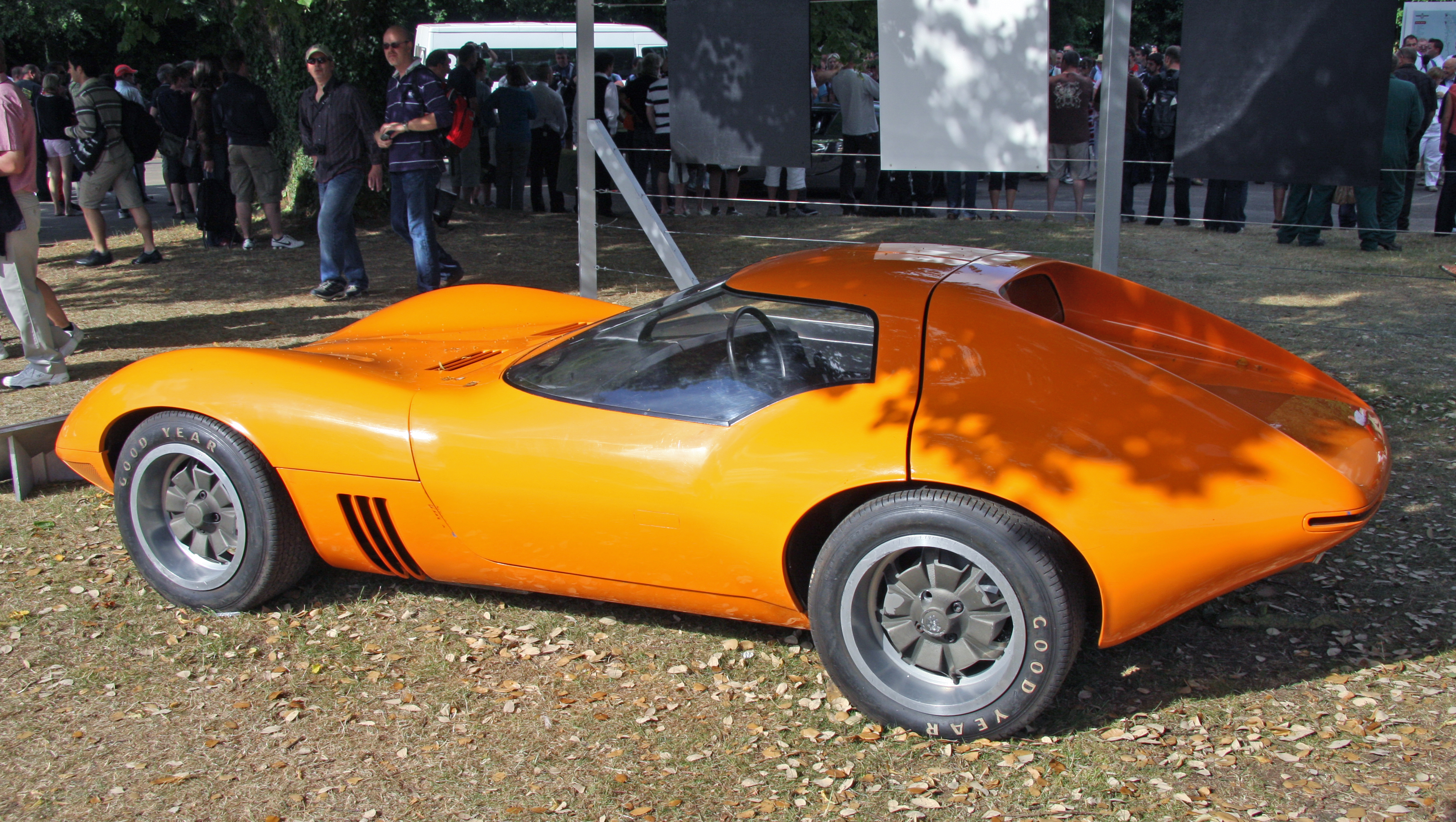
14. **Vauxhall XVR Concept (1966)**Stepping onto the international stage at the Geneva Auto Show in March 1966, the Vauxhall XVR Concept was a groundbreaking moment for the British marque. This sleek two-seater wasn’t just another pretty face; it was the very first Vauxhall concept car ever to be exhibited in public, marking a significant departure and a bold new direction for the brand. It was Vauxhall declaring its intent to play on the global stage of advanced automotive design.
David Jones, Vauxhall’s then Director of Styling, described the XVR as “uncompromising in its styling treatment.” This car wasn’t built to blend in; it was designed to predict “the future trend in world design,” a truly ambitious claim. Its sharp, angular lines, low stance, and aggressive front fascia were a stark contrast to many of the more conventional vehicles of the era, embodying a spirit of audacious futurism.
More profoundly, the XVR was a physical manifestation of the newfound means and power that had been allocated to GM’s European design studios during the vibrant 1960s. It showcased greater autonomy and creative freedom, allowing designers to dream big and present radical ideas without immediate production feasibility. This concept was a statement of creative liberation, proving that Vauxhall was capable of competing with the most avant-garde designs coming out of continental Europe and beyond. The XVR, though never destined for mass production, firmly placed Vauxhall on the map as a serious player in the world of forward-thinking automotive design.
**The Enduring Whisper of the Vanished Future**
As our journey through the fantastical concepts of the ’60s concludes, it’s impossible not to feel a lingering sense of awe, and perhaps a touch of wistful regret. These weren’t just static displays of sheet metal and dreams; they were dynamic expressions of boundless ambition, each a testament to an era when designers and engineers believed that tomorrow’s car could be anything their imagination allowed. From DeLorean’s thwarted Banshee to Jaguar’s unraced XJ13, and from Alfa Romeo’s aerodynamic Carabo to Holden’s tech-laden Hurricane, these prototypes painted a vivid picture of diverse automotive futures.
Though many of these visionary machines remained confined to the annals of history, never gracing our roads in mass production, their impact is undeniably profound. They inspired future generations, pioneered technologies that would eventually become commonplace, and kept the flame of automotive innovation burning brightly. The ’60s, a decade of monumental shifts, birthed not just iconic production cars but also these magnificent, vanished secrets – whispers of what might have been, echoing through time and continuing to captivate the hearts of enthusiasts who appreciate the daring spirit of pure design and engineering exploration.

